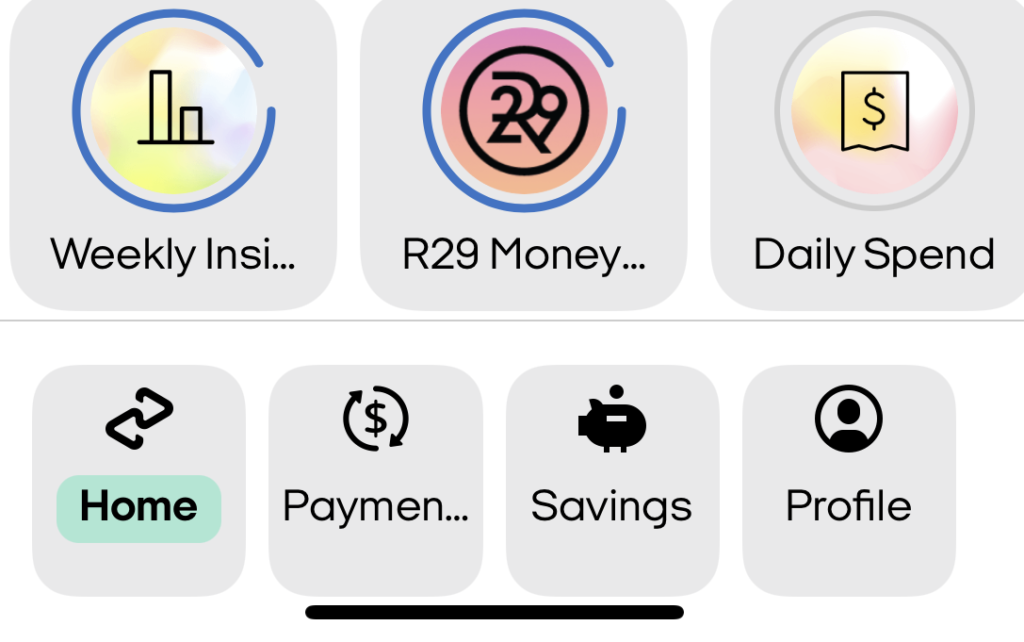Digital Banking 2022 – The Moroku Perspective
It's a race to the top on emotion

COVID has accelerated the adoption of digital banking. Lockdowns, quarantines and social distancing have all bound us tighter to the Internet via as many screens as we dare choose. Research from London-based fintech Nucoro found that during the first month of the UK lockdown, more than six million people downloaded a mobile banking app for the first time. In many circumstances these changes are likely to be permanent. Knowledge workers for certain will likely spend more time working in their pyjamas. Whilst cost was the original attraction for banks to go digital, providing a leading and compelling experience is the battleground. New entrants and Fintechs are amping up the heat along with regulators who appear unwavering in their demands that banks exist to service customers and support their lives.
Whilst most challenger banks are barely making any money and are still only taking modest share of the market, digital capabilities across the market have risen with the competitive threat returning to the dominant market players and the Super Fintechs. With digital onboarding now so widely available, the simple and well-defined race to the bottom on origination speed is closing out. As we turn into a post pandemic world, it’s now becoming a race to the top on emotion, building deep experiences that connect with customers.
Banking is a simple and difficult game. You need to attract deposits from customers or wholesale institutions, lend them out and augment revenue with payment fees. It doesn’t matter if it is “digital” or not. To compete you need scale to harvest cheap deposits or a high margin niche. If you can’t be profitable figuring that out you need to raise capital or die.
There is growing demand among banks for delivering enhanced customer experience (CX). Poor digital experience is now the primary driver of attrition, with a well designed banking app now the number one consideration when choosing a bank. Most opportunistically, the most profitable customers are also those most likely to switch. In the two years prior to the pandemic, the number of customers leaving their financial institution for another was around 12%. New data suggests this will jump to 27% for large banks between 2020 and 2022. Of those who indicated they intend to leave their financial institution, almost three fourths are Millennials or Generation-Z consumers.
Banks now face the challenge to deliver compelling, emotive digital propositions that elevate the human experience to meet the expectations of this new normal.
“Convergence of experience is key for banking. Must be as simple and engaging as shopping online. Personalisation is to be the differentiator. “
John Hanna – Group CTO , Winning Group

Wellness Wins
As banks build stronger empathy with customers and wish to serve them better , 2022 will be the year that the incorporation of financial fitness at the center of the digital value proposition separates those that get it and those that dont.
Doing well with money isn’t about what you know. This is why financial literacy failed. It’s about how you behave. Whilst money has been typically taught as maths, the reality is that people make money decisions based on their personal history, unique view of the world, ego, pride, marketing, and odd incentives.
This is why simple goal setting doesnt work. As Scott Adams, of Dilbert fame, points out, goals are for losers, systems are for winners. Its about unpacking our beliefs, values and biases, facing them then setting a new set of habits supported by our friends, community and lots of nudges, support, timely and well placed coaching and celebration moments along the way. We never get there. We are only ever getting there.
The winning propositions will be based on customers winning and will use game theory to take customers on that journey. They will understand that there are multiple competitions or leagues within which players play. Within these there are different roles and that whilst not everyone wins the grand final, wellness wins by way of the gamified apps purpose being to help people get better, become more well, become financially fit and ready to take on their next challenge. This is the win:win many have talked about but previosuly failed to deliver because the design process had been hijacked by the hunger to deliver revenue and capture share. The courageous will trust in win:win for wellness and winning to deliver engagement, loyalty, virality and market leadership.
The Moroku Design Sprint is a unique 4-8 week process available as a fixed price, zoom delivered engagement to define what this means and delivers a tested working prototype for those most excited about what game has to offer.

Cloud Based Architecture
Whilst a great CX is paramount there is relentless pressure on costs leading to an increased adoption of cloud-based solutions and the commodification of infrastructure. In Q1 2020 US banks reported a ~70% YoY profit dip resulting in accelerated rationalisation. Ongoing revenue challenges due to ultra-low interest rates, tepid loan demands and limited fee income opportunities will keep the focus on cost management to overcome margin pressure.
HSBC spent much of 2021 offloading businesses and asset classes to become more focussed.
Citibank’s have offloaded (or are in the process of off-loading) much of their retail banking business around the world. Perhaps indicating the investment required to transform versus the pay-off is too great when competing with big tech. Maybe they will refocus any investment away from retail banking and into commercial and institutional banking where there is less fintech attention (for now) and possibly greater returns for incumbents.
Deutsche is aiming to reduce its cost-to-income ratio from 85% to 70% in 2022, with the simplification of IT systems a key component of the plan.
Westpac aims to reduce its cost base by $2bn from 2021 – 2024 by off-loading non-core businesses, digitising more processes and cutting back on real estate and people. As the resilience and economics of cloud-based systems improve and gain the approval of regulators, more and more banking systems will be offloaded to the cloud allowing banks to focus on servicing customers. Cloud based systems will be increasingly given preference over on-premise models to help offload people and real estate with more elastic operating and financial models with closer links to consumption against revenue.
Cloud first architectures, with networks in their DNA, are inherently ecosystem based. Focus around marketplaces and the ecosystem-driven business models within them allow service offerings to be expanded and tested at far greater speed and scale than traditional build and sell software factories.
The network centric approach of cloud architectures and the decoupling of capabilities such as identity, also make them better suited to tracking customers across channels and providing a seamless omnichannel experience. To meet the demands of the digital agenda, banks will migrate an increasing number of services from legacy infrastructure to cloud-native architectures. In order to align executive and board tenure with the results of these transformations and replatformings they will almost always be done in a piecemeal fashion, hopefully under the watchful eye of a CIO with a strategic telos.
More Digital Only Banks

In every corner of the world, challenger banks and neo banks, those without a single physical branch, offering their services exclusively via mobile have sprung up. With lower cost bases and eager capital, they have been able to compete with preferential rates and lower fees.
The threat of neo banks and challengers has been replaced by Super Fintechs. In a letter to shareholders in April 2021 JP Morgan chief, Jamie Dimon, described the situation as an enormous competitive threat, adding that the role of banks within the financial system is shrinking. Whilst the combined market capitalisation of US and European banks in 2020 was ~USD 3.3tn, Big Tech has already passed USD 6tn. In February 2022 Square’s acquisition of AfterPay in Australia for USD29bn was completed, buying out majority shareholders such as Mitsubishi UFJ, delisting from the ASX and transitioning to the new corporate structure of BLOCK following Jack Dorsey’s departure. Square is just one example of SuperFintech’s eager to leverage their technology prowess, innovation culture and aggression to nudge out incumbents, displacing card volumes along with deposits, payments and lending.
Traditional banks have struggled to compete, attract capital and talent as the regulators in many parts of the world keep them busy with regulatory oversight and compliance obligations and remediation of the legacy systems and multiple pain points:
- High, regulatory driven change leaving little capacity for innovation
- Investor timelines for return sucking the appetite for test, fail, learn, breakthrough innovation cycles
- Procurement regimes coupled with HR performance management systems that reward empire building continue to impact engagement with smaller, agile fintechs that threaten employees
- Risk averse culture clashing with innovation
- Cognisance of innovation limited by the length of tenure in legacy encumbered, inwardly focussed “safety first”organisations and systems
Westpac again makes the headlines for all the wrong reasons with the largest corporate fine in the history of the country, being ordered to pay a $1.3 billion penalty for its breaches of the Anti-Money Laundering and Counter-Terrorism Financing and lots of remediation work following in the wake. It is very difficult to build digital cultures that are predicated on test-fail-learn when you become so risk and change averse. It is very diffcult to move forward, when you are constantly looking in the rear view mirror, anxious about the next compliance breaching landmine.
The leading banks will increasingly deploy digital only subsidiaries to break away from the cost and culture models of their rusted on legacy. Digital only businesses also allow banks to diversify their business lines and geographic presence and leverage their core assets such as their finance and risk engines. In September 2021 JP Morgan launched its digital only UK bank and spent a rumoured $957mn to acquire digital wealth platform Nutmeg in the pursuit. In 2020 Standard Chartered launched MOX in Hong Kong in partnership with PCCW-HKT and trip.com and has since launched a JV in Singapore. In Vietnam, VPBank teamed up with ride hailing app BeGroup to launch digital only bank Cake targeting 10million BeGroup customers and drivers. In Australia, NAB bought neo 86400 to revamp its digital subsidiary UBank, despite the legacy client server architecture that underpins it.
Expect 2022 to see an increasing pattern of digital spinoffs for the incumbents as they deal with legacy infrastructure, histories and cultures.
“Every great Fintech/start-up/scale-up at the moment is looking at its B2B strategy regardless of whether that is where they started life. The really good ones realise that if they have architected their technology stack correctly (or make a few tweaks to do so) they now have a platform that can be sold and resold over and over again to other parties that can benefit from the exceptional CX and lower unit economics that new tech components bring. This is the reason why “xxxx as a service” and embedded finance opportunities will boom over the coming months and years. As the large incumbents start to realise, why spend tens of (or hundreds of) millions to build something on the side that you’re not sure will work, when there is a live and viable cost per unit option available for them on the table. 2022 will be a huge year for traction in this space.”
Shaun Lordan, Chief Product Officer , Nano Home Loans

More embedded finance and Banking-as-a-Service (BaaS)
As traditional banks and credit unions lose customers, they will increasingly rent out what they have to those better positioned for the relentless pace and fail forward fast culture of FinTechs. Westpac’s project with digital core provider 10X to leverage the bank’s risk and finance engines appears to be paying off, with AfterPay one of its first customers.
Standard Chartered has also built a BaaS solution called Nexus and has publicly announced partnerships with some of Indonesias e-commerce unicorns. Standard Chartered will provide digital financial services to Bukalapak’s customer base of more than 100 million users and 13.5 million sellers.
Customers are more willing than ever before to use services provided by non bank companies. To meet the rise for embedded finance, banks will increasingly offer up their core services, often white-labelled or co-branded.
The growing need to meet the compliance requirements and opportunities presented by new data regulations will continue to power the acceleration of BaaS as providers across the industry concern themselves with how they operate in and capitalise from a networked world of expanded service offerings.
"Banks have been somewhat insulated from need to truly transform by having deep data pools unavailable to challengers. Regulators now are showing a propensity to open the barriers up with things like CDR. This will drastically increase the pressure on incumbents and see them recognise that digital evolution is now not enough. JPMC increasing their IT budget to $12bn per annum would seem to support this."
Nick Wilde Head of Asia Pacific, Thought Machine
This will see the industry increasingly split into two;
- Banks providing generic accounting, payment and vanilla risk services for average customers, with an operating model based on scale and fine margins
- Fintechs and retailers, unbothered about being a bank, but just want to own customers and margin who will service distinct groups by bundling products, owning the customer experience, building specific risk management modules for their tribe and renting BaaS from banks or embedded finance providers. This group includes airlines and lifestyle companies like Qantas and Singapore Airlines who are rapidly moving into financial services due to the existential crisis posed by COVID.
As this split deepens, core banking providers, such as 10X, Thought Machine, Mambu, Temenos, SAP and Finastra will increase the pace of their partnerships and banks as they both converge on BaaS.
Mobile First

The transition towards mobile sees the share of mobile users rocketing past 80%. Mobile banking simplifies access, allows customers to operate across the lifecycle of money and products in real-time in a way online banking never did or can; the mobile goes places our laptops don’t. In turn, mobile banking delivers a sharp increase in the number of contacts with a customer, increased brand loyalty, and opportunities to sell new services.
Mobile banking has thus become existential and prioritised for a bank’s retail and corporate business. Many Neo banks have completely abandoned the web version of their digital channels, leaving only a mobile application to interact. Via a “Mobile Only” strategy.
Yet the pandemic has shown a slowing down in the “flow” of customers from online banking to mobile banking, or even some “revival” of customer interest in online banking. If a bank customer is “in constant motion”, then they most likely will not even turn on a laptop (not to mention a desktop computer), but if they are already within a “home office”, then they are more likely to choose to work with an online bank using a large monitor.
Mobile banking simplifies “atomic” periodically repeating actions that are compactly and conveniently presented to customers on their smartphone screen: payments and purchases, transfers, or viewing balances. At the same time online banking helps customers solve more complex tasks that require more data to be reflected and deeper analysis: studying the bank’s personal offers, choosing loan and investment options, viewing statistics and planning, or performing complex operations that require checking a large number of details. As banking applications begin traversing business and wealth management, this level of complexity across the learn, plan and manage spectrum of tasks becomes more difficult to consume on a small screen, with deep time spent on a larger format being of value.
Mobile applications must be the priority focus for the digital experience to gain the commitment and loyalty of the most active and promising share of individual and SMB users, who will determine the state of the economy in the near future. From that vantage, developed online banking channels will provide the convenience of working with more information and time to digest more complex problems and opportunity analysis.
Thus, a mobile first approach becomes table stakes and provides the digital infrastructure to then begin extending services across larger formats for high cognitive and margin activities such as investing, wealth management, planning and reporting.